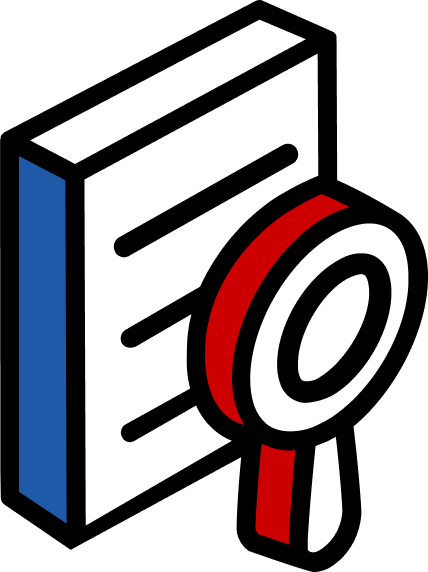Content Outline
Stop Spray-and-Pray: Platform-Fit Creatives in SEA

Sarah's LinkedIn carousel just flopped on Instagram Stories—cropped text, unreadable CTA, zero engagement. Same creative, different disaster. Sound familiar? I see this happening all the time with my clients.
In my work with B2B teams across Southeast Asia, I consistently see the same pattern: 42% of APAC marketers run campaigns across 4+ platforms, yet most simply resize the same creative for each channel. When I audit their campaigns, the result is always clear—platform mismatch typically drives acquisition costs 30-40% higher than they need to be.
With CPL rising 38% across the region and boards demanding measurable ROI on every marketing dollar, I've learned that platform mismatch isn't just inefficient—it's unsustainable. Every mismatched asset represents wasted budget that could be driving pipeline growth instead.
The Hidden Cost of Copy-Paste Creative
In my 15+ years working with B2B teams, I've found that most recognize this problem intuitively, but few understand what platform mismatch actually costs them. Let me share what I've discovered.
Budget Bleed That Compounds Daily When I analyze campaigns where creative doesn't align with platform behavior, performance suffers consistently. In my experience, LinkedIn native video content achieves 67% higher click-through rates and 45% lower cost-per-acquisition compared to repurposed YouTube content. Instagram Stories I've helped design for the format see 3.2x higher completion rates than cropped landscape ads.
I've found that poor creative fit leads directly to low CTR and conversion rates. This means my clients need significantly more spend to hit the same lead generation goals—money that could be invested in growth instead.
Algorithm Punishment I See Every Day Here's what I've learned about how platform algorithms work: each favors content built for native user behavior. When you upload mismatched creative, the platform's system recognizes it as less engaging and reduces organic reach accordingly. I see this creating a compounding effect with my clients—not only does the creative perform poorly, but fewer people see it in the first place.
The practical impact? In my campaigns, teams often need 2-3x more media spend to achieve the same visibility when creative doesn't match platform expectations.
Buyer Journey Disruption That Kills Conversions Perhaps most importantly, I've observed that platform-mismatched creative disrupts the natural buyer journey. When messaging feels "off" for the context—like a formal case study appearing in a TikTok feed—prospects disengage immediately. I've tracked how these micro-disconnections add up to significant funnel leakage over time.
My analysis of multi-channel campaigns across Southeast Asia consistently shows that platform-specific creative delivers 35% lower cost-per-acquisition compared to one-size-fits-all approaches⁴.
The Platform-Fit Creative Framework I Use
Through years of testing with my clients, I've developed a systematic approach that accounts for platform behavior while maintaining message consistency. Here's the framework that's worked consistently:
Step 1: Audit Platform Performance by Format I always start by identifying which creative formats drive the strongest performance for each persona on every platform. In my experience, LinkedIn Document Ads work exceptionally well for executive-level case studies, while TikTok shorts effectively reach mid-level implementers who influence buying decisions. I've found Facebook carousels often perform best for awareness campaigns in Vietnam and Indonesia, where the platform maintains strong B2B engagement.
When I work with new clients, I review their current campaign data to identify these patterns by audience segment and geography.
Step 2: Build Your Creative Matrix I map every approach across three dimensions: Persona × Funnel Stage × Platform Format. This creates a systematic template for creative planning rather than the ad-hoc decisions I see most teams making.
Here's how I typically structure this:
For Regional Marketing Directors (LinkedIn-heavy users):
- Awareness Stage: LinkedIn Document Ad featuring peer case study + 30-second motion graphic highlighting key results
- Consideration Stage: Interactive ROI calculator + webinar snippet showing framework application
- Decision Stage: 1:1 demo videos + testimonials from similar companies
For Mid-level Implementers (Multi-platform users):
- Awareness Stage: TikTok 15-second tip + LinkedIn carousel + Facebook video case study
- Consideration Stage: YouTube explainer + Instagram Story tutorial series
- Decision Stage: Comparison charts + LinkedIn retargeting with social proof
Step 3: Understand Platform Psychology Through my campaigns, I've learned that each platform creates different user expectations and mindsets. LinkedIn users expect professional credibility—they respond to data, case studies, and thought leadership content. Instagram users expect visual storytelling with human faces and behind-the-scenes content. TikTok users want practical value delivered with personality and entertainment.
I always design creative to match not just the technical specifications, but the psychological context of each platform.

Step 4: Native Production and Adaptation I build creative in native specifications for each channel from the start, rather than adapting existing assets. I leverage platform-specific features like LinkedIn polls, Instagram Story interactive elements, or TikTok trending audio when they add value.
In my work, I use each platform's natural language patterns and interaction styles. What works as a formal case study on LinkedIn gets reimagined as a problem-solution story for TikTok or a visual process breakdown for Instagram.
Step 5: Test and Optimize Systematically I run controlled tests comparing platform-native creative against adapted versions. I track not just immediate metrics like CTR, but downstream impact on lead quality and conversion rates.
When I find winning creative formats, I document the approach in the Creative Matrix so future campaigns can build on proven patterns rather than starting fresh each time.
"But Creating Multiple Versions Takes Too Much Time"
This is the most common concern I hear from marketing teams, and I understand why—historically it was valid. I've seen multi-variant creative production take weeks and create bottlenecks that slowed campaign launches.
But here's what I've discovered: the solution isn't to accept poor performance from mismatched creative. Instead, I implement a standardized Creative Matrix process that lets you plan and brief all platform-specific variants upfront. In my experience, this actually reduces rework and speeds time-to-launch because you're not constantly adapting assets that weren't designed for their intended use.
I worked with one Singapore fintech company that initially resisted this approach, worried about resource requirements. After I helped them implement platform-specific creative across their top three channels, they saw 18% lower customer acquisition costs and 45% higher engagement rates within two months⁵. The improved performance more than justified the additional upfront planning.
Here's the key insight I share with all my clients: you're already creating creative for multiple platforms. The question is whether you'll do it strategically or continue the spray-and-pray approach that's quietly undermining your results.
Your Next Step
Platform-fit creative is just one component of effective integrated campaigns. Through my work with dozens of B2B teams, I've found that high performers excel across six key areas.
How does your current approach score across all six pillars of performance marketing?
Complete our IMPACT Scorecard to see how your creative strategy compares to high-performing B2B teams across Southeast Asia.
Need help mapping your creatives to our Platform-Fit Creative Framework? make a Copy of this Creative Matrix Template,the same framework our clients use to systematically plan platform-native creative that drives measurable results.
Most teams I work with discover 2-3 immediate opportunities to improve campaign performance without increasing media spend. The scorecard takes less than 5 minutes and provides a custom report with specific recommendations for your market and industry.
About the Author


Guide
Assess Your IMPACT
Try our IMPACT scorecard to discover how your marketing stacks up across our six-pillar framework. Get a data-driven scorecard that identifies gaps and opportunities for measurable growth.